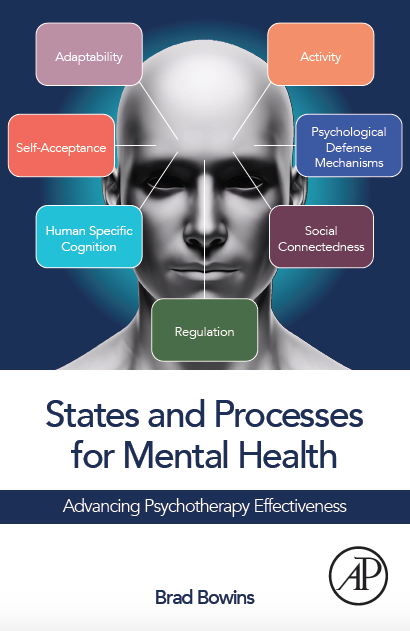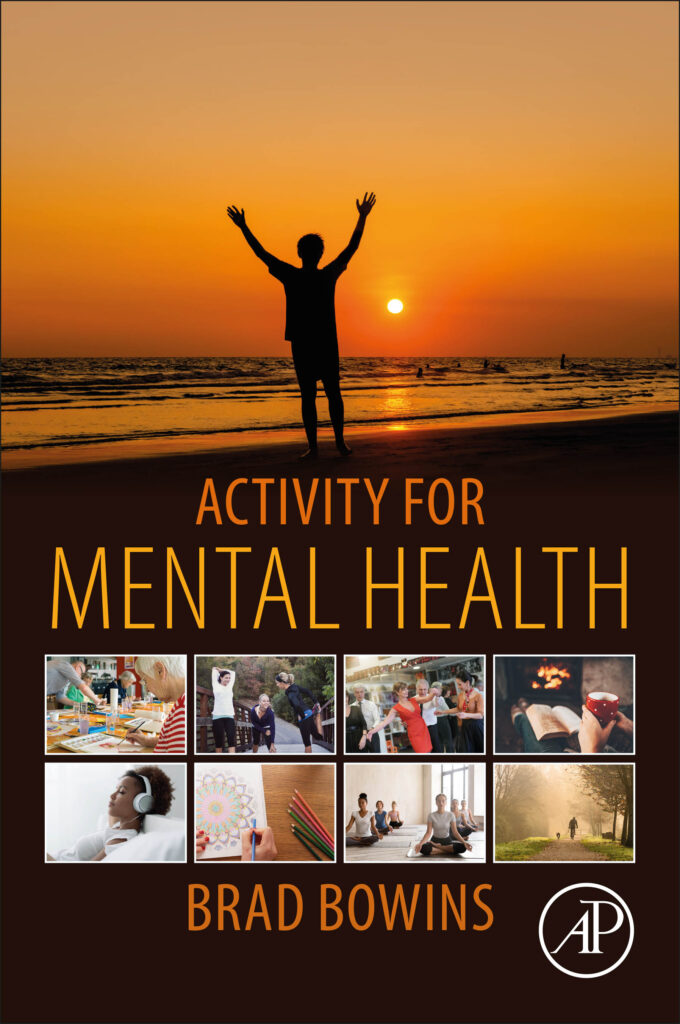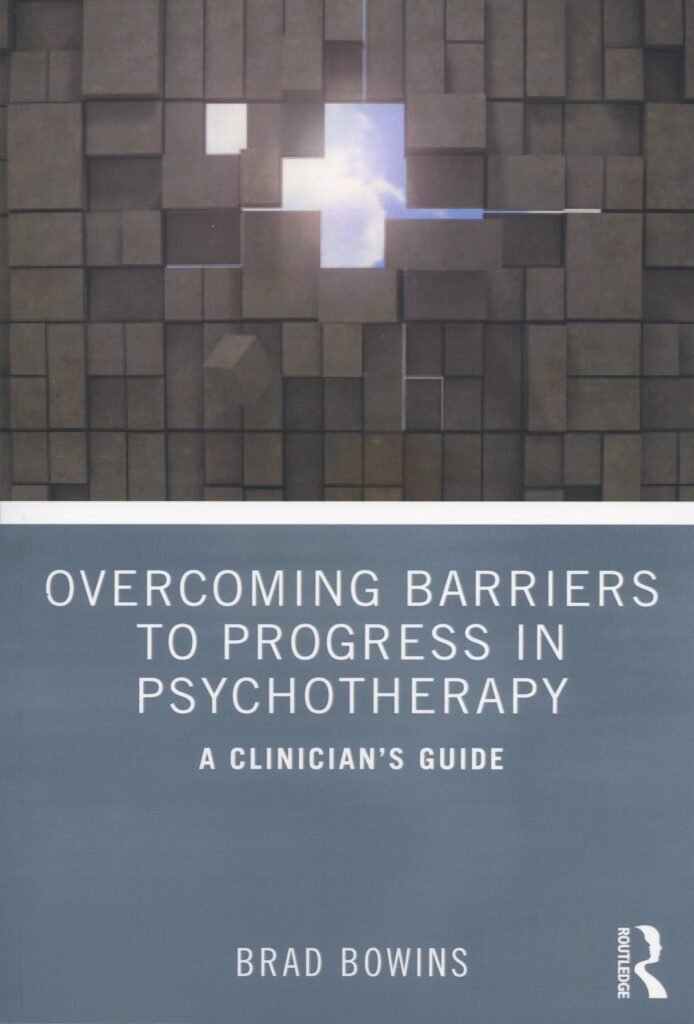States And Processes For Mental Health: Advancing Psychotherapy Effectiveness Seller Options

Presents a novel mechanism of action for psychotherapy, revealing how psychotherapy actually works by advancing key states and processes characterizing mental health. This new understanding is presented in three sections. The first section identifies 7 states and processes for mental health. The second section examines 15 major forms of psychotherapy and non-specific factors with a comprehensive overview of each, followed by an empirical and theoretical proof of concept showing how they do indeed enhance the states and processes for mental health. In the third section, the author explores conceptual and practical problems in the current approach to psychotherapy, whereby discrete forms of psychotherapy are oriented to remedying psychopathology. Dr. Bowins then offers a new trans-therapy approach applying general strategies and those derived from existing forms of psychotherapy, to advance each of the states and processes characterizing mental health.
Key Features
Identifies states and processes for mental health—activity, psychological defense mechanisms, social connectedness, regulation, human specific cognition, self-acceptance, and adaptability.
Reveals how current forms of psychotherapy and non-specific factors actually advance the states and processes characterizing mental health.
Demonstrates problems with the current system of psychotherapy.
Provides a novel unified approach to psychotherapy.
Activity for Mental Health Seller Options

Explores all forms of activity, as a means to both manage mental illness and advance mental health in the general population. This book not only reviews the evidence behind activity, but also reveals why it is so effective. Physical, social, nature, cognitive, art/hobby, and music activity are thoroughly investigated in separate chapters. The focus is on informal activity therapy as a simple, direct, and very positive intervention. More formal Behavioral Activation Therapy (BAT) is also presented to demonstrate the power of behavioral activation. Case examples connect the benefits with real life scenarios and assist in the application of activity therapy. From this comprehensive coverage, Activity for Mental Health provides the information needed for clinicians, researchers, and policy makers, to effectively treat mental illness and advance mental health.
Key Features
• Distinguishes informal activity therapy from more formal Behavioral Activation Therapy (BAT), revealing the role that behavioral activation plays in both.
• Provides evidence for physical, social, nature, cognitive, art/hobby, and music activity, in regards to treating mental illness and advancing mental health in the general population.
• Reveals the unique ways that specific forms of activity work, as with nature exposure modulating nervous system stress responses and music processing emotions.
• Highlights the core reasons why activity is so robust, including evolutionary influences.
• Presentation of intriguing case examples showing the negative impact of inactivity and benefits of activity for mental health.
• Demonstrates the ease of applying activity therapy, thereby providing clinicians with a simple and robust intervention strategy.
Mental Illness Defined: Continuums, Regulation, And Defense Seller Options

Accurately defining mental illness is crucial for treatment providers and researchers, because it fosters a comprehensive understanding and optimizes therapeutic interventions. In addition, it frees psychopathology from political and financial influences that weaken its scientific integrity.
In combination, continuums, regulation, and defense, robustly define mental illness.
Continuums: Psychopathology embodied by major diagnostic systems (DSM and ICD) emphasizes discrete conditions, in line with our psychological preference for discreteness. However, nature almost universally gravitates to continuums. Naturally occurring mental illness continuums are identified, based on neuroscience and other relevant data.
Regulation: Despite how biological systems rely on regulation, it is largely neglected when it comes to mental illness. Psychopathology frequently arises from impaired regulation, fostering a shift from milder expressions on continuums to extreme manifestations. A diverse collection of therapeutic techniques, under the umbrella of cognitive regulatory control therapies, is presented that restore effective regulation.
Defense: The surprising role of psychological defense, understood in terms of compensation for stressors, is described for the various mental illness continuums, and techniques are provided to augment healthy defensive functioning.
The model of psychopathology proposed aligns with its natural organization, thereby placing mental illness on a more scientific foundation.
For a more detailed look see Amazon Inside Cover via links below.
REVIEWS
Eric R. Marcus, MD, director, Columbia University Center for Psychoanalytic Training and Research; professor of clinical psychiatry, Columbia University College of Physicians and Surgeons
“This book describes the dimensional applied to psychiatric diagnosis and stirs the discussion at just the right time. The DSM system of rigid categories for psychiatric diagnosis is increasingly called into question. Categorical vs dimensional; we need to have this discussion. Bowins allows us the ability to think about the topic in the sophisticated way it demands!”
Barbara Klein, PhD, ED, author, Alone in the Mirror: Twins in Therapy
“Mental Illness Defined is a thought-provoking and meaningful book. Dr. Bowins presents a sophisticated and innovative approach to understanding and integrating contemporary psychoanalytic theory with the latest cognitive behavioral theory and neuroscience. This combination of theories is presented on a continuum and provides a coherent and cohesive way of looking at the practice and necessary research in mental health in today’s world. This approach is positive, individualistic, and open-ended in a dogmatic and rigid atmosphere that prescribes discrete sophomoric categories for emotional deregulation.”
Edward Shorter, PhD FRSC, Jason A Hannah Professor of the History of Medicine, professor of psychiatry, faculty of medicine, University of Toronto
“As a scientific classification of psychiatric illness, the current DSM has evoked widespread dissatisfaction. Clearly, alternative schemes of illness classification are needed. Here Dr. Bowins throws into the mix the concepts of continuum, regulation and defense: many disorders acting in reciprocal relationship to one another in order to maintain balance in the organism. The analysis is strikingly original, based on a command of the enormous literature, and is an essential contribution to the coming debate.”
Overcoming Barriers To Progress In Psychotherapy: A Clinician’s Guide Seller Options

Psychotherapy is the most common intervention for mental illness when the full spectrum of problems is considered. Many clients have benefited enormously, suffering transformed into healthy functioning. Unfortunately, progress is often limited with approximately one-third drop-out rates an indicator, and for the two-thirds of clients that persist with psychotherapy, less than ideal outcomes are fairly common. Hence, an exploration of factors impeding the progress of psychotherapy, and application of robust strategies to reduce drop-out rates and enhance outcomes is required. Overcoming Barriers To Progress In Psychotherapy: A Clinician’s Guide, explores the full range of client, therapist, and interactive impediments to psychotherapy progress, and provides effective strategies to manage these barriers. Diverse and comprehensive theoretical perspectives are applied, ensuring that the material spans the range of therapies and mental health conditions. Illustrative case examples enhance the perspectives and approaches. With the knowledge and strategies provided, progress can be optimized allowing psychotherapy to achieve its full potential.
A New Perspective On Sexual Orientation: Theory Meets Reality Seller Options

We are all aware of sexual orientation and its influence on sexual behavior, but the true nature of this complex occurrence is elusive. Despite extensive investigations there is no clear answer as to what sexual orientation is. Conjectures far outweigh proven fact. Based on extensive experience counselling clients regarding sexual orientation issues, such as discrimination and persecution, it became apparent that common perspectives are inaccurate. A major problem pertains to how theories of sexual orientation are generated, without first establishing criteria for a robust theory. Correcting this error, twelve comprehensive criteria for a robust theory of sexual orientation are presented. Major biological, evolutionary, and psychosocial perspectives are evaluated based on the theory criteria, revealing weak performance. With the goal of aligning clinical and research realities, and guided by the twelve theory criteria, a four-component approach—homoerotic and heteroerotic dimensions, activation/deactivation of these dimensions, erotic fantasy, and social construction—that comprehensively define sexual orientation, is proposed. This proposition represents the first novel theory of sexual orientation in decades, explaining many fascinating sexual orientation occurrences. It is a must read for researchers/scholars, graduate/undergraduate students, and sexual orientation counsellors.
FOR OTHER BOOKS BY DR. BRAD BOWINS VISIT bradbowinsbooks.com https://bradbowinsbooks.com